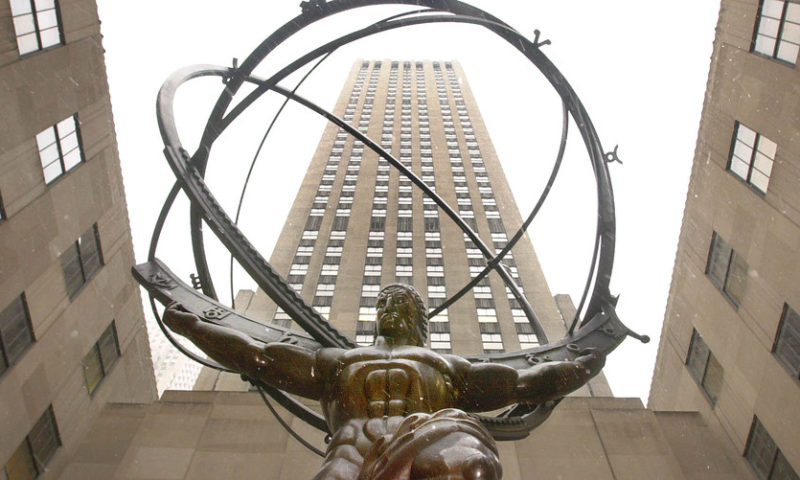As global warning signs pick up, investors debate whether recalibration will lead to rout or rebound
Dismal China data, a dovish about-face by the European Central Bank and a lackluster U.S. jobs report all left stock-market investors feeling the weight of the world on their shoulders this past week, sending Wall Street equities on a five-day skid on rising fears that a global slowdown could derail a bull market that celebrates its 10th anniversary on Saturday.
“The U.S. employment report published [Friday] provides further evidence that the U.S. economy is starting to falter. And with growth elsewhere also likely to remain weak, we think that equities in the U.S. will fall this year, dragging down most stock markets across the globe,” said Hubert de Barochez, economist at Capital Economics, in a note.
For some investors, however, the pullback is less about deteriorating fundamentals and more about a recalibration of overly optimistic expectations.
“In my mind, this is more of an issue that there’s nothing to fear but fear itself,” said Putri Pascualy, managing director at Paamco, an Irvine, Calif.-based institutional investment firm, in a phone interview. The global economy is still growing, as is the U.S. Investors in risky assets, however, may have gotten ahead of themselves as the calendar flipped over to 2019, she said.
Major stock indexes posted their fifth straight decline Friday, leaving the S&P 500SPX, -0.21% down 2.2% for the week at 2,743.07. The Dow Jones Industrial Average DJIA, -0.09% suffered a weekly fall of 2.2% to 25,450.24, while the Nasdaq Composite COMP, -0.18% lost 2.5% to 7,408.14. It was the worst week of 2019 for all three gauges.
But stocks are still sporting strong gains for the year to date, with the S&P 500 and Dow up more than 9% and the Nasdaq up 11.7%, marking a strong rebound from a sharp end-of-year selloff.
Stocks ended off session lows on Friday, but slumped early after data showed a sharp slowdown in U.S. job creation in February. The jobs data wasn’t all bad, however, with the unemployment rate falling and wage growth showing a pickup. Pascualy and other investors, however, argue that rising wage growth could prove a headwind for stocks if firms are unable to pass on rising labor costs to consumers.
Earlier, Chinese data showing a 20.7% year-over-year drop in exports in February put pressure on global equities, the latest in a series of downbeat readings from the world’s second-largest economy that have fueled global growth concerns. On Thursday, the European Central Bank unnerved investors when it slashed its forecasts for eurozone growth, pushed back its guidance on when it expects to begin raising interest rates and introduced fresh stimulus measures, while warning that risks to the economic outlook still were skewed to the downside due to external uncertainties.
Meanwhile, the U.S. and China have yet to reach an agreement that would end a trade battle between the economic superpowers. Stocks had ran up in recent weeks in part on optimism for a deal.
Still, for all the gloom, much of the deterioration in economic momentum seen in early 2019 has been largely “sentiment-driven,” said Candice Bangsund, portfolio manager at Montreal-based Fiera Capital, referring to activity surveys. In part, that’s reflective of those U.S.-China trade tensions, ongoing uncertainty surrounding Britain’s exit from the European Union and geopolitical tensions elsewhere.
“Our expectation is that global growth is going to find a bottom here in the first half of 2019 and reaccelerate,” she said, in an interview. She sees two likely catalysts — an amicable outcome on the U.S.-China trade front and the feeding through of a host of monetary and fiscal stimulus measures into China’s economy.
A de-escalation of trade tensions and a resumption of global growth would provide a tailwind that would lift global equities, she said, noting that the firm has raised its year-end target for the S&P 500 to 2,950, a rise of 7.5% from its present level. Fiera’s previous target was 2,800.
Pascualy said the question for the market is less about whether the U.S. is facing recession and more about “how are investors repricing risk…and how much investors want to get paid per unit of risk is more the story than any fundamental change.”
She suspects that near-term risks are weighted more to the downside than upside for broad asset classes. But it will also be an environment marked by more variability — or dispersion — within asset classes, a boon for active managers.
Stock-market bears, meanwhile, see the softness as affirmation that U.S. investors have been overly optimistic about both the U.S. economy and the rest of the world, meaning more downside for stocks.
Even with global central banks taking a more dovish turn, “we still think that global growth will continue to weaken, putting pressure on corporate earnings and triggering a flight to safety,” said de Barochez at Capital Economics.
The firm, which has long been bearish on the outlook for the U.S. economy and stocks, forecasts the S&P 50 to end 2019 at 2,300, down more than 15% from its current level.
Investors face a relatively quiet week when it comes to the economic calendar. January retail sales data on Monday could prove “a bit messy” after a sharp 1.2% fall in December proved at odds with most other retail metrics, said analysts at RBC Capital Markets. That could lead to a sizable upward revision to the December figure.
Other data in focus include the February consumer-price index on Tuesday and January durable-goods orders on Wednesday.

